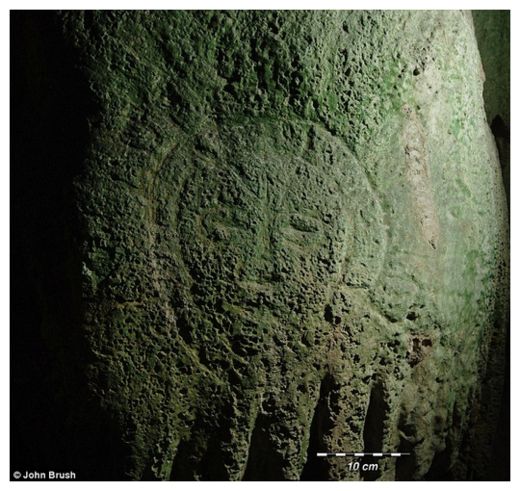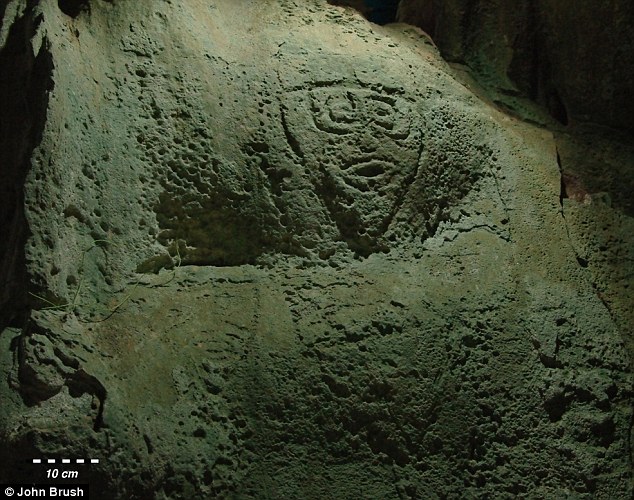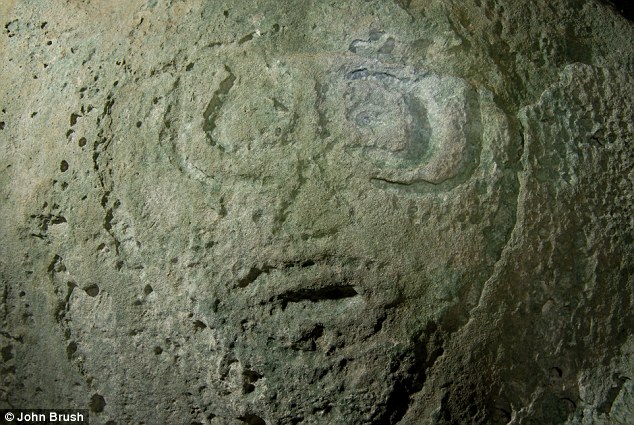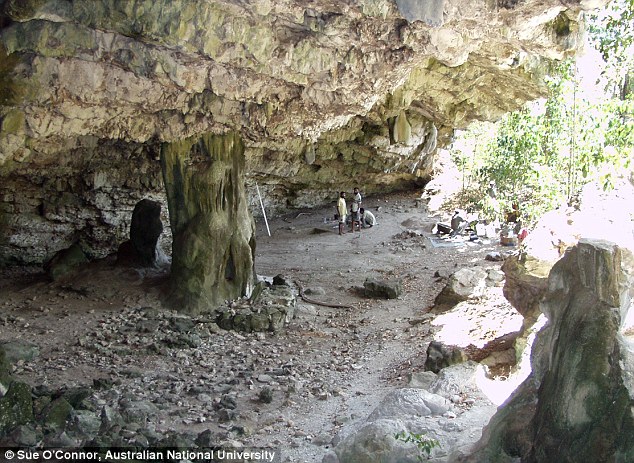
The Australian researchers were exploring a large cave on the north-east tip of East Timor, which gained independence from Indonesia after a bloody conflict in 2002, when they were stunned to find, by chance, a row of engraved faces staring at them from the wall.
'Looking up from the cave floor at a colleague sitting on a ledge, my head torch shone on what seemed to be a weathered carving,' said Dr Ken Aplin of the Commonwealth Scientific and Industrial Research Organisation, based in Canberra.
'I shone the torch around and saw a whole panel of engraved prehistoric human faces on the wall of the cave.
'The local landowners with whom we were working were stunned by the findings.
'They said the faces had chosen that day to reveal themselves because they were pleased by the field work we were doing.'
Dr Aplin and the team were working in the Lene Hara cave, a treasure trove of fossils and rock art, when they saw the faces.
Known as petroglyphs, the carved images are frontal, stylised faces, each with eyes, a nose and a mouth. One even has a circular headdress with rays that frame the face.
Using special testing techniques known as uranium isotope dating, scientists from the University of Queensland working with the CSIRO team, established that the 'sun ray' face was between 10,000 and 12,000 years old, placing it in the late Pleistocene period.


What has surprised the team is that the faces have not been discovered before - the cave has been visited by archaeologists and rock art specialists from around the world since the early 1960s.
The earlier teams have studied other rock paintings, which include hand stencils, boats, animals, human figures and linear decorative motifs.
Engravings of faces have been found throughout the Melanesian islands of the Pacific and in Australia, but the petroglyphs in the Lene Hara cave are the only ones known to have been dated to the Pleistocene period.
Other art in the cave has been dated at around 30,000 years old.
Last year the CSIRO announced that it had discovered evidence of an extinct species of ancient, giant rats - the size of small dogs - which is why they returned to the cave to look for fossils of the creatures.
The CSIRO team's discovery of the rock portraits is published in the Journal of Antiquity.




Reader Comments
to our Newsletter